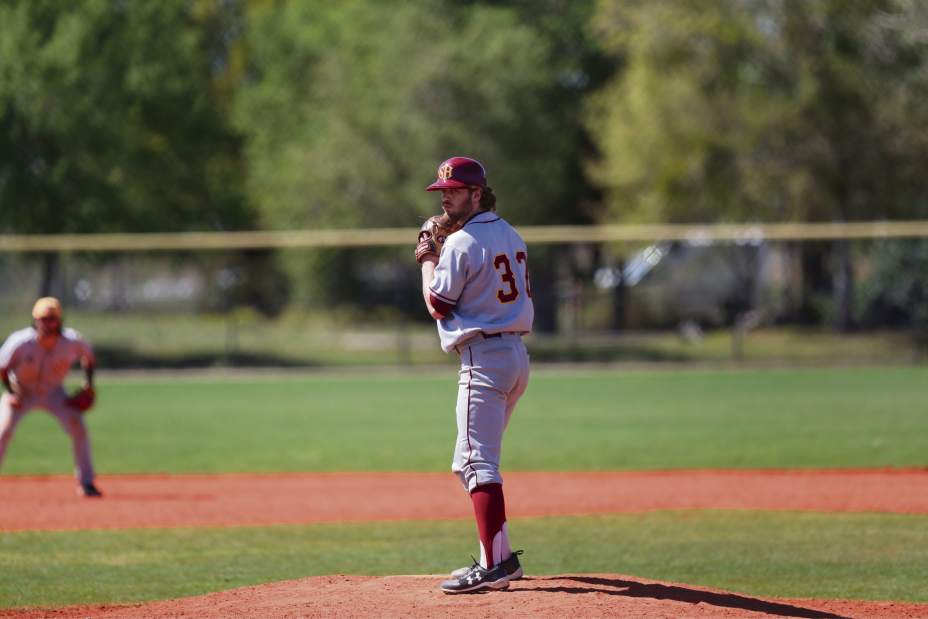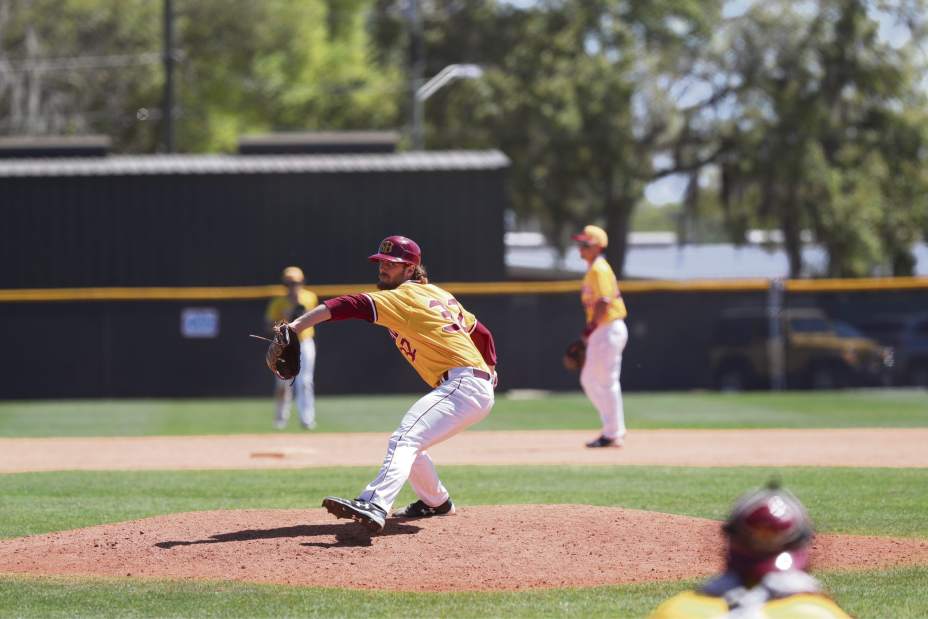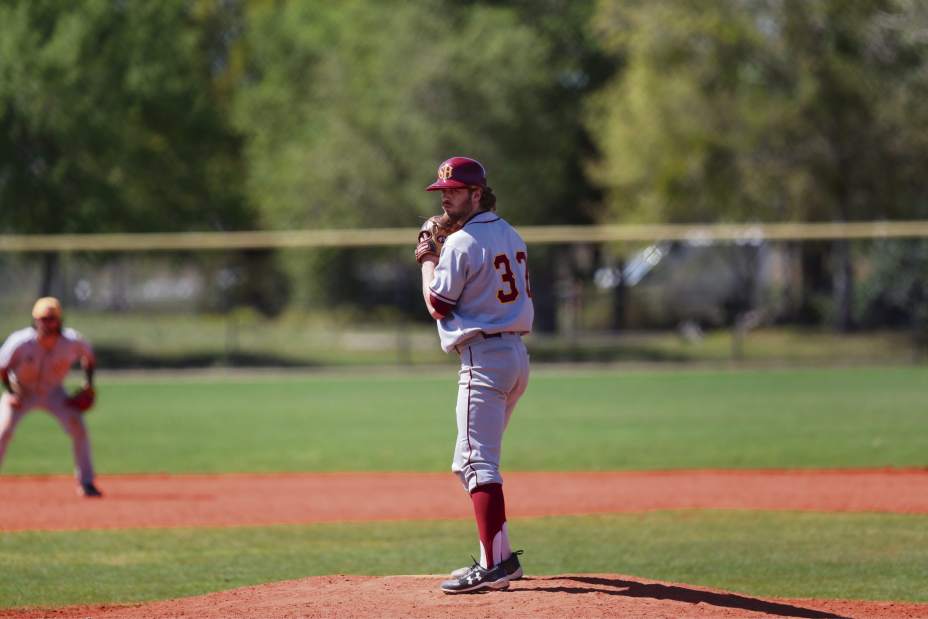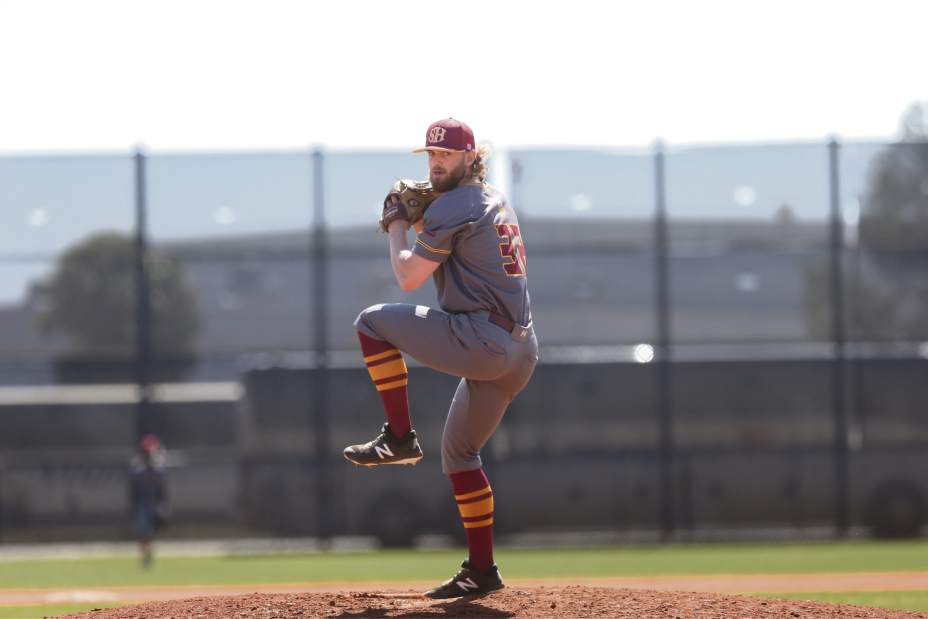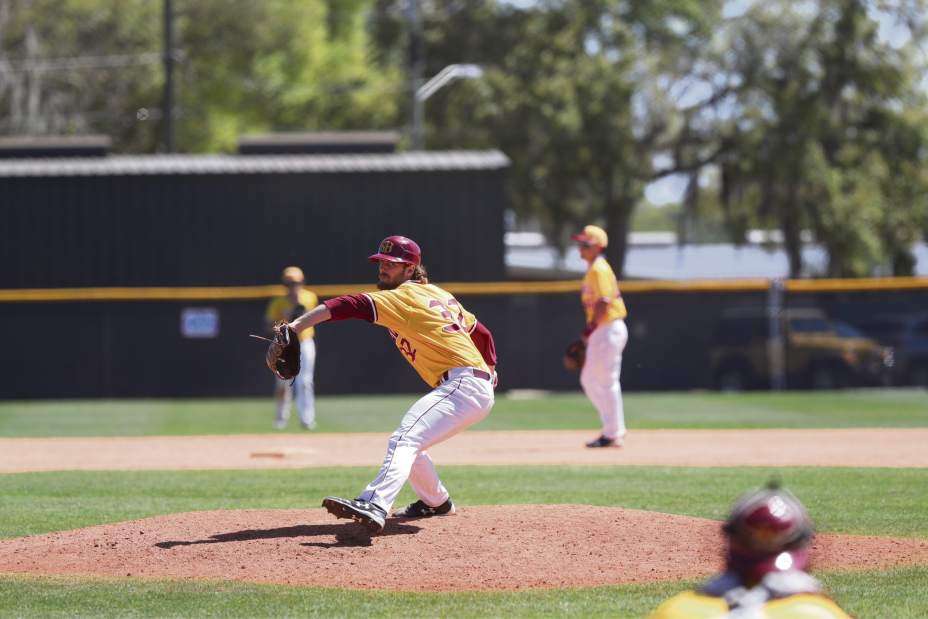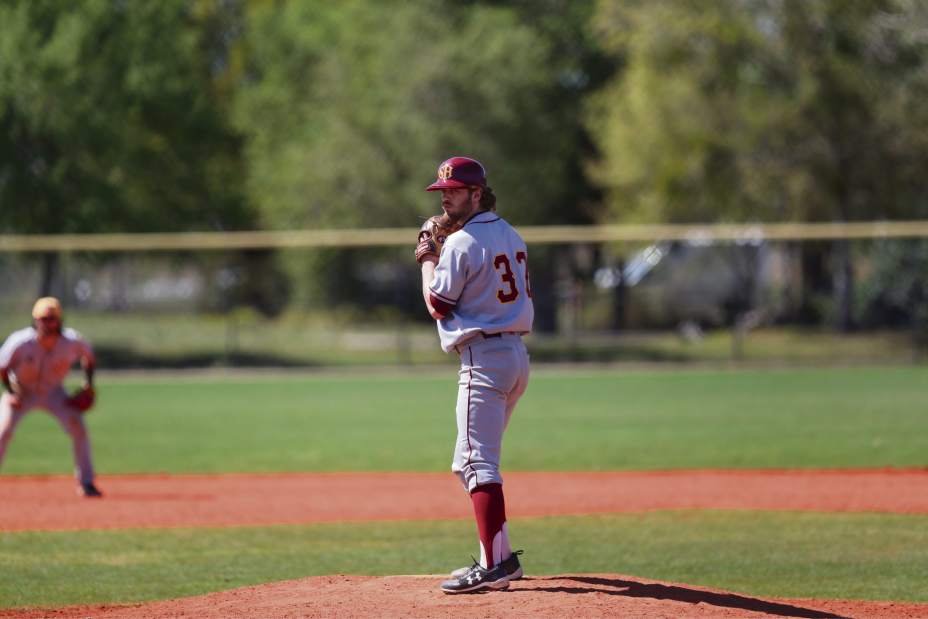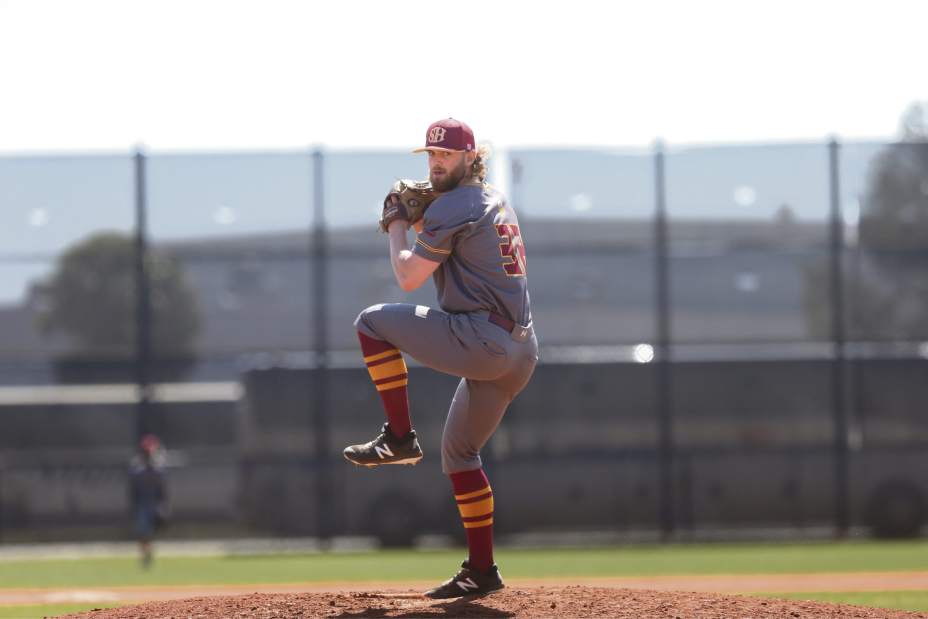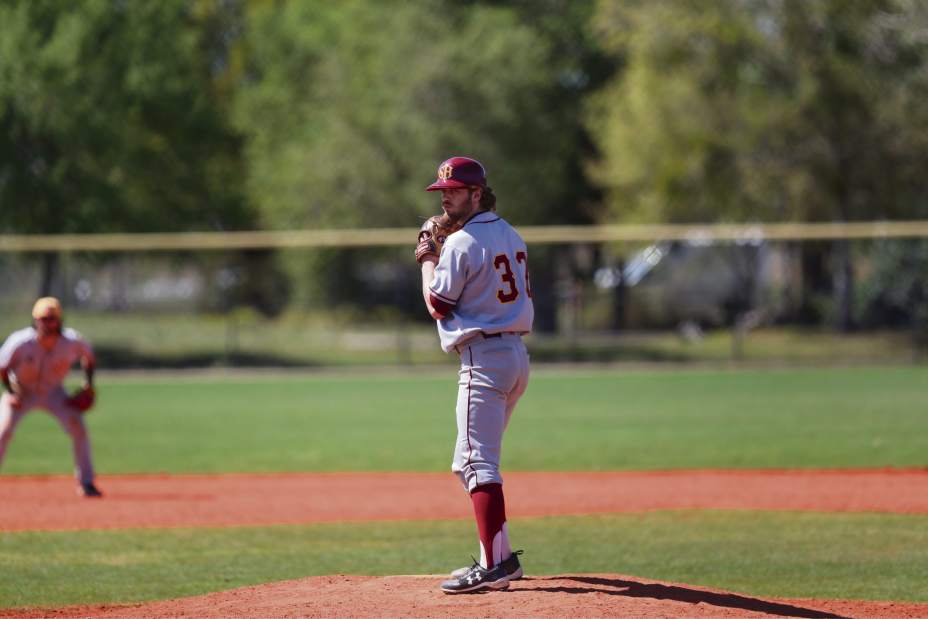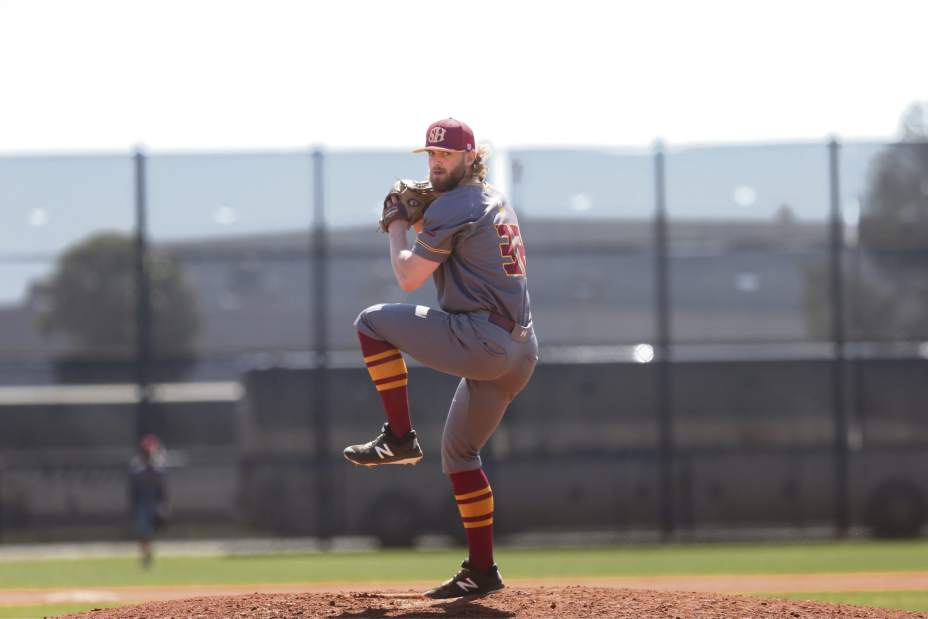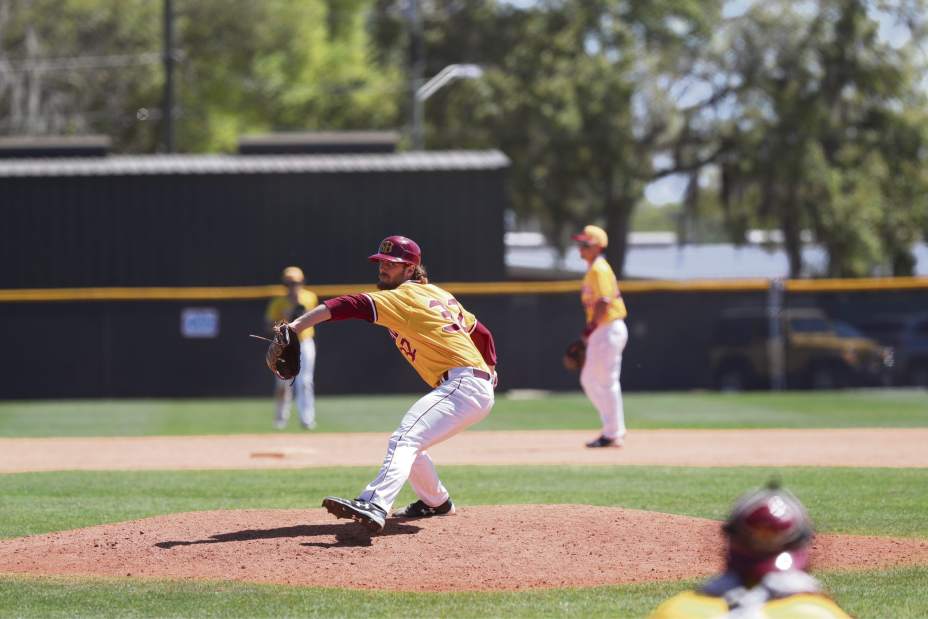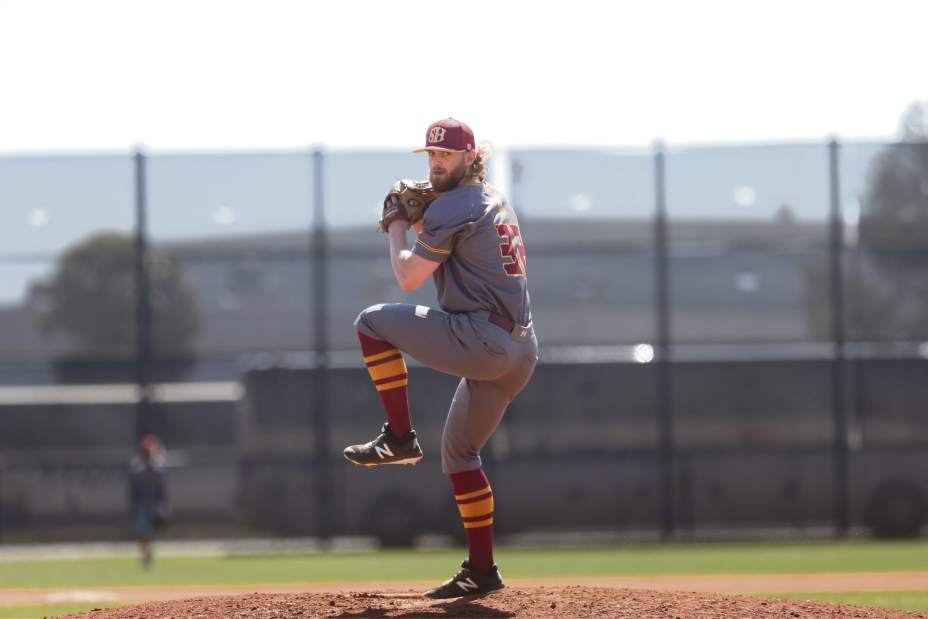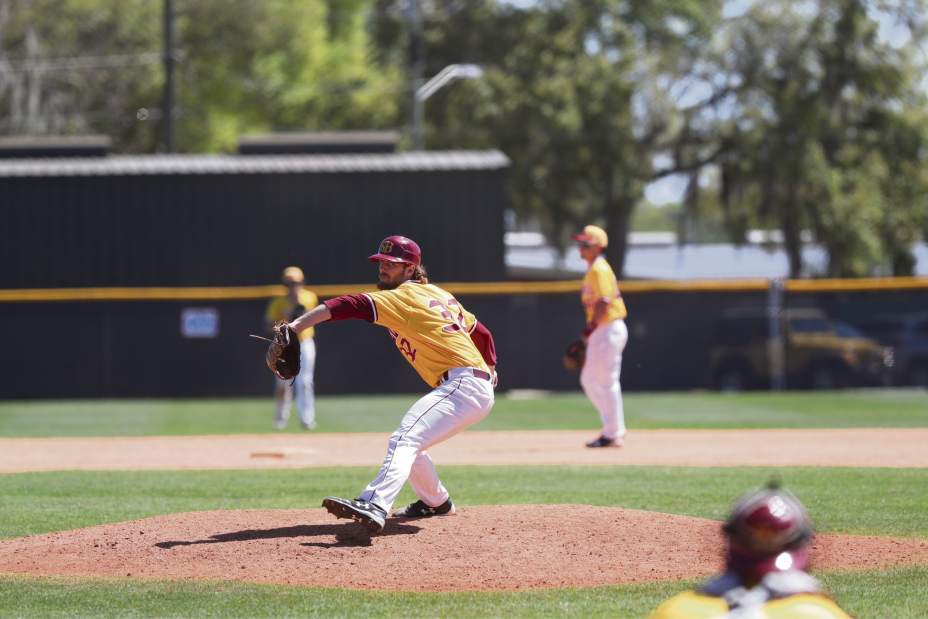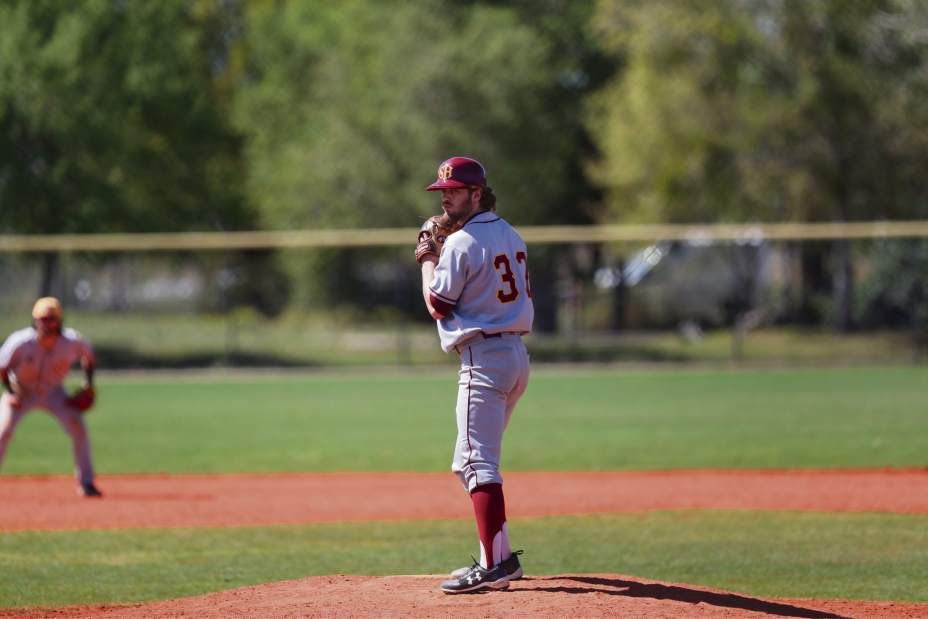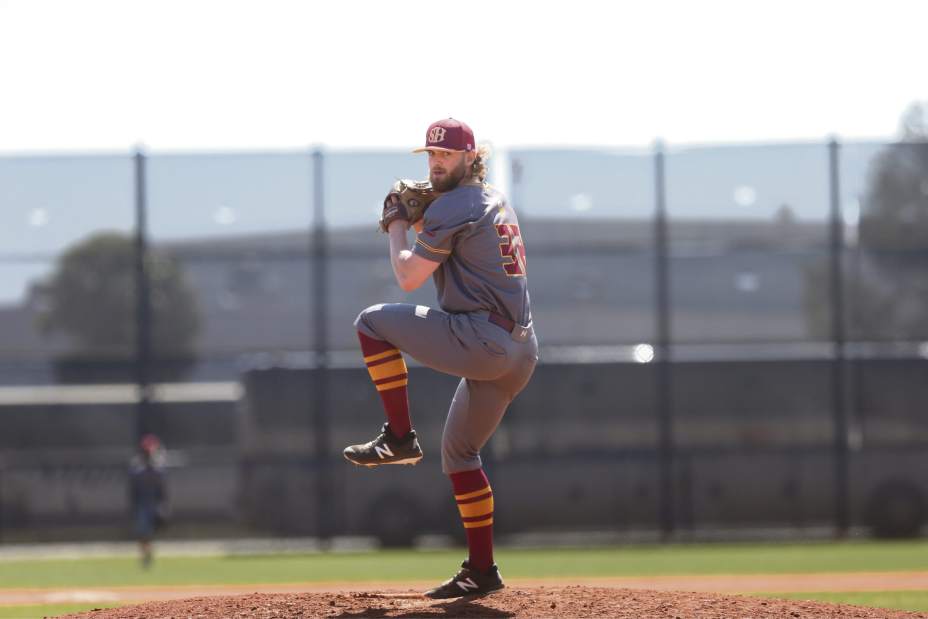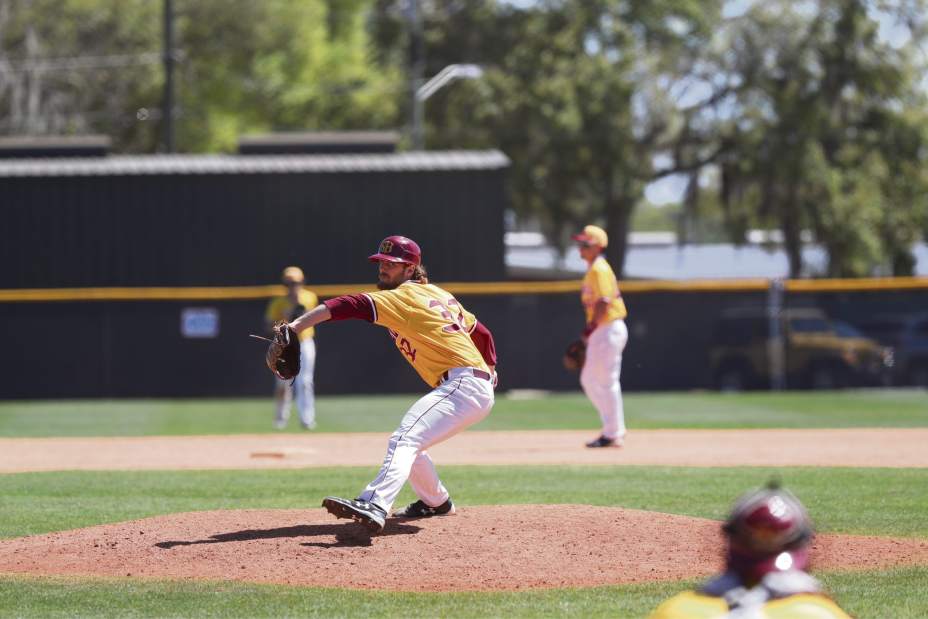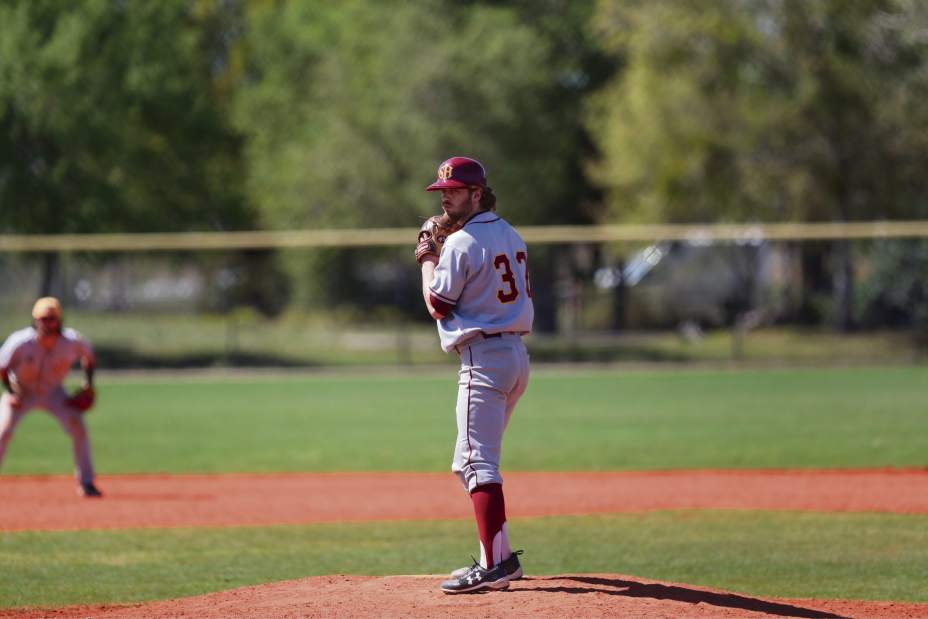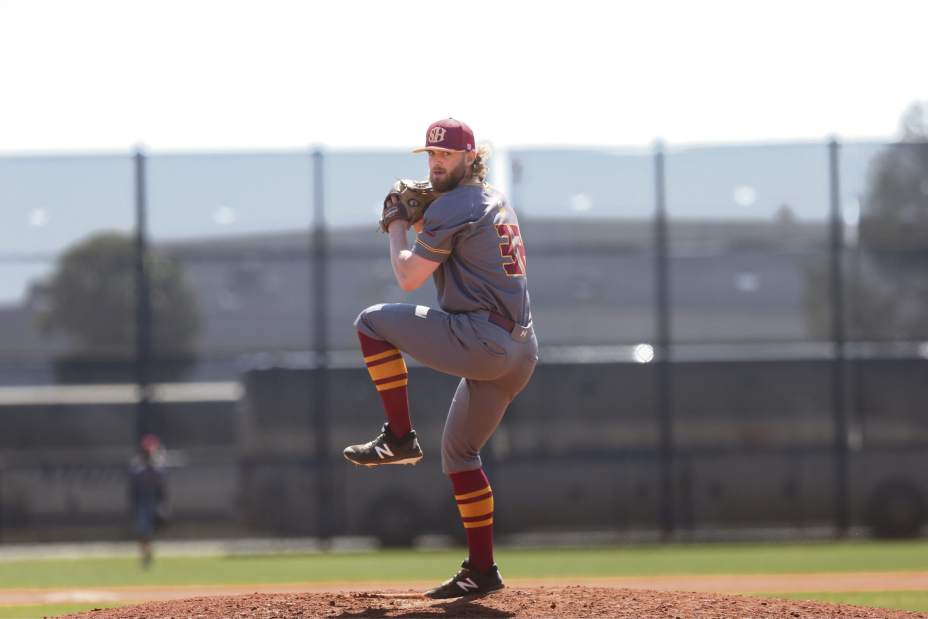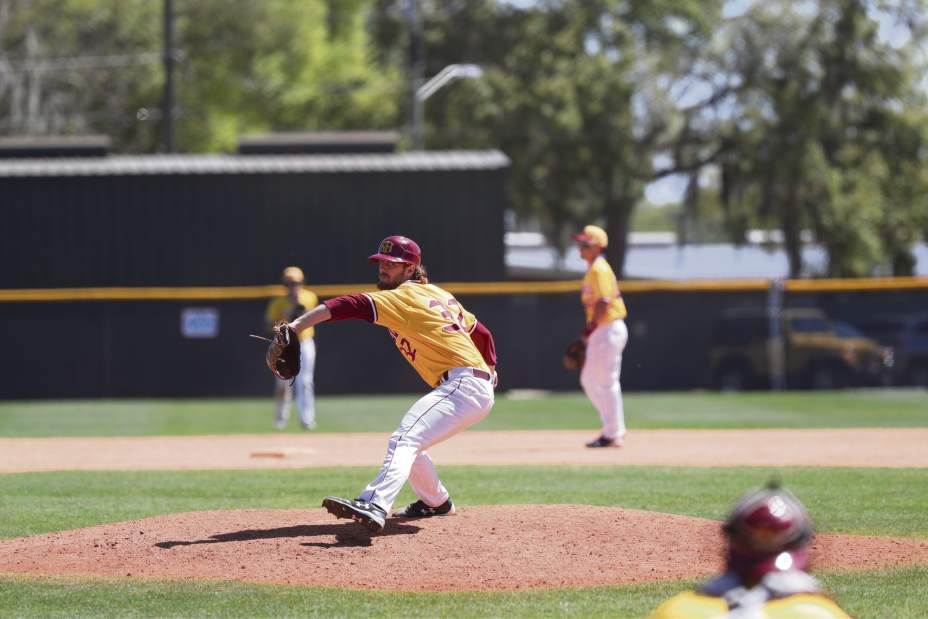Seton Hill's Kenny Wells rebounds, excels after near-death experience
Butterflies swirled inside Kenny Wells as he took the mound for Seton Hill in the nightcap of doubleheader last season against Northwood.
A freshman making his first collegiate appearance, Wells wanted to impress his coaches and teammates. Mostly, the hard-throwing right-hander wanted to hold on to the Griffins' late lead. Seton Hill was up 6-4 going into the seventh, and final, inning.
Wells allowed three hits, two walks and three earned runs, and Seton Hill lost, 7-6, in Winter Haven, Fla. It goes down as the best poor outing of his career.
"Once I got back and got on the mound in Florida, it was a crazy experience," Wells said. "For everybody that gets to play in college, you get butterflies, especially that first time. But for me, going out there in a helmet and just trying to close a game, and I end up blowing the save. Honestly, it was just great to be out there."
For Wells' teammates and coaches, there were no hard feelings about that March 11, 2017, loss. If anything, it was a reason to celebrate and an opportunity to marvel at Wells' determination.
A little more than a month before that blown save, Wells was in a twilight state, nearly brain-dead after a freak on-field accident. His recovery was quick, remarkable and it even included a storybook-like ending.
The incident
During a Feb. 7, 2017, intersquad game, Wells was hit in the back of the head after ducking to get out of the way of a catcher's throw to second base. The impact made a thud, and Wells spent a couple of seconds on the ground before he quickly popped up and tried to jog off the injury.
"I played baseball my whole life, and I've been hit by a baseball in the head a couple times but not as fast as that," Wells said.
I sware i' not comcused pic.twitter.com/l5wpLLPOsK
— KeNNy TriLL (@Kenny_Wells33) February 7, 2017
Wells received immediate medical attention from Seton Hill's training staff and was shut down for the day. He went through concussion protocol and passed.
He pitched again two days later, and he pitched well.
"The following day, he came to practice and didn't feel well," Seton Hill coach Marc Marizzaldi said. "I said, 'Why don't you just take the day off?' A couple hours later, that's when Brian Dabney found him. It was one of those things that we didn't think was a big deal. You almost forget he got hit until we were in the emergency room."
Before Wells was taken to the emergency room at Excela Health Westmoreland Hospital, Dabney — Wells' roommate and teammate — walked into their dorm room about 11 a.m.
"I was in between classes. I went back to get a few things. I walked in, he was sleeping," Dabney said. "I just thought nothing of it. He was sleeping because he had a rough practice, whatever it was. As soon as I turned around, he starting having a seizure. I've seen seizures before, but I knew his was different because of his head injury. It was very violent. There was a lot of discoloring in his face. I knew he needed help fast."
Dabney, a left-handed pitcher from Montour, called 911. He also called Marizzaldi.
About seven minutes later, Wells was en route to the hospital with his teammate and Jordan Blair, head athletic trainer at Seton Hill.
Marizzaldi wasn't far behind.
"They had him stabilized, and everything was fine. I was there about 15 minutes when he went into another massive seizure," Marizzaldi said. "The doctors took him in for another CT scan, and we kind of knew it was much more than just a bump on the head at that point. They came back, and the CT scan confirmed he had a brain bleed. They basically induced a coma. That was not only hard to witness, but it escalated."
Weather conditions prevented Wells from being life-flighted to Allegheny General Hospital in Pittsburgh, so he was taken by ambulance. Marizzaldi followed in his vehicle.
Happy 20th birthday to my roommate who has literally saved my ass from dying!! @brian_dabney love you❤️ pic.twitter.com/cZqkK4Dmsk
— KeNNy TriLL (@Kenny_Wells33) March 19, 2018
The cause
The CT scan revealed Wells had a brain bruise where he was hit in the head, and blood had clotted in that area. The clot thinned because of ibuprofen in his system. Wells, like any Seton Hill athlete who went through concussion protocol, was instructed not to take ibuprofen.
Wells believes he followed Seton Hill's protocol.
"I honestly do not remember taking ibuprofen or anything. I don't know if I even did. I guess it was in my system," he said. "That morning, I don't remember taking it. I might haven taken Tylenol or something. I threw the day before, so my arm might have hurt. I went there at 6 a.m., and I wasn't feeling myself. From then on, I don't remember much of anything."
The brain bleeding led to Wells' seizures, and uncertainty set in for those surrounding him.
"At this point, we're not sure if he has brain function or how much he has, and we weren't going to know until he comes out of it," Blair said. "It was a very scary time."
Allegheny General is equipped to perform a craniotomy, which is the removal of part of the skull cap when the brain swells. The likelihood Wells needed the procedure was high.
The recovery
As steps were being taken to prep for a craniotomy and with his parents and members of the baseball team present, Wells awoke. The startled pitcher almost immediately began removing his breathing tube.
"He woke up confused as hell," Blair said. "They were getting ready to prep him to remove part of his skull. People were able to calm him down."
Wells didn't need brain surgery, but doctors warned he might not play baseball again. He also was told it would take at least six months before he could resume physical activities.
Wells wanted none of it.
"I had doctors saying I wouldn't play that year for sure," Wells said. "I was driven to be back. I really did not want to sit out that year. In my recovery, I didn't have any setbacks, any concussions symptoms. I said, 'I can come back from that. I'll be all right.' "
Wells believes the power of positive thinking and the help of Dr. James Masterson and the Excela Health Sports Concussion Program led to a remarkably speedy recovery.
"We don't have any great answers for why that spot on his brain cleared up within a month," Blair said. "He began physical activity within a couple weeks when we thought it would take much longer. He was cleared by doctors about a month later."
The helmet and the comeback
Because Wells suffered significant head trauma, he wore a specially fitted helmet on the field.
It wasn't an easy fit.
"I have the smallest head on the team, to be honest," Wells said. "I can never keep a hat on. I had to put a headband on. I had to have a headband, a hat and the helmet on top, and it still would fall of. It was a pain, but it kept me safe."
Wells was back, but it took a couple of outings to adjust to Division II baseball.
Through hard work, Wells had seen a dramatic increase in velocity. At Cloverleaf High School in Lodi, Ohio, Wells' fastball usually topped off in the mid- to upper-80s. Post-injury, he consistently hits 92 mph. He has topped out at 95.
"He developed into a fantastic pitcher, and that's hard to do sitting on the sideline like he did," Marizzaldi said. "His velocity improved … which allowed him to be a fantastic pitcher at our level. I really think he's going to have a chance to pitch professionally."
Wells suffered a setback last season before a conference game. The Griffins were warming up about two hours beforehand when Wells took off a sweatshirt. Before he could get his helmet back on, an overthrown baseball hit Wells.
Guess where.
"Of all the people to hit, it hits Kenny in the head," Marizzaldi said.
Wells was sent to Blair, who shut the pitcher down for a week for precautionary reasons.
Upon his return Wells, who was already one of the team's most outgoing personalities, quickly became one of the Griffins' most trusted pitchers.
In his final nine outings of last season, he allowed just three earned runs and three walks with 18 strikeouts. He led Seton Hill in wins (seven) and saves (three), and his 16 appearances tied for a team high.
It gets better.
At the PSAC Tournament, the fourth-seeded Griffins were led by Wells. The reliever picked up two victories and a save. Only a couple of months removed from a significant brain injury, Wells was tournament MVP.
"Seeing him get that honor, it was a great moment. He deserved it. He worked his butt off," Marizzaldi said. "Doctors tell him he might never play baseball again, to see him in a few short months raising that MVP award is something special. It's like a fairy tale."
Wells, the Griffins' closer, no longer wears the helmet, but he still strikes out batters with regularity.
Wells is 1-1 in seven appearances with 24 strikeouts in 122⁄3 innings. Opponents are batting just .191 against him, but he's walked 13 and thrown five wild pitches, which has led to a 4.26 ERA.
At 10-16 overall and 5-7 in the PSAC, Seton Hill isn't off to the start it expected, but there's an appreciation for circumstances that likely wasn't present before Wells was injured. He has inspired teammates, and the Griffins know plenty of time remains to regain their standing as the conference's top team.
"We might not have the best record, but just wait. We write our own ending," Wells said. "We'll see you in Cary, N.C., at the Division II national championship. I'm still banking on we're going to win it. Don't sleep on us."
Mike Kovak is a Tribune-Review staff writer. Reach him at mkovak@tribweb.com or via Twitter @MKovak_Trib.

